ScreenNameHere
New Member Posts: 1
From: Pennsylvania, USA
Registered: Dec 2023
|
 posted 01-02-2024 09:03 PM
posted 01-02-2024 09:03 PM
   
I am in possession of a NASA Lunar Excursion Module (LEM) model. My best guess is that the model is a 1964 scale model of the full size Lunar Lander shown at the 1964 World's Fair in Flushing, New York, or possibly slightly after the Worlds Fair due to some "improvements" in the design of the landing gear. Images of the 1964 full size Lunar Lander from the Worlds Fair is found here. I am uncertain as to the true origin of the model, but since it is serialized (see below) I suspect it was originally constructed as part of museum project on behalf of NASA or Grumman. 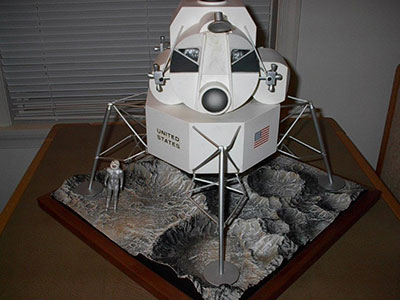 I am looking for any assistance you may be able to provide in determining exactly what this model is, how many of them were made by the modeler, Richard Rush Studios, as well as obtaining an estimate on its value. The model will be sold in the future, either privately or via auction. Information on the model is presented below. The model itself is signed with an applied manufacturer's label on the underside stating "Richard R*** Studio, 168 N. Clinton Street, Chicago 6, Illinois." The label is clear in appearance with white colored writing measuring approximately 1/2" x 2-1/4" wide. Requested research by the Chicago History Museum enabled the determination that the model signature should be completed as "Richard Rush Studio, 168 N. Clinton Street, Chicago 6, Illinois". Why the "6" exists after "Chicago" is unknown. Mr. Rush was a consummate model maker. He and his company have made models ranging from The John Hancock Building situated in the lobby of the John Hancock Building, to dinosaurs, to miniatures, to larger than life models of the human heart which one could walk though... anything involving science and sculpture. Richard Rush Studios prepared models for governments, municipalities, as well as the private sector. Richard Rush Studios did perform work for NASA. A selection of PDF files are included with this post and provide an synopsis of the works, life and business of Richard Rush. Richard Rush died December 2, 2001. His obituary can be found here. Richard Rush Studios is now defunct. A Tribune newspaper article ("Heads, Moons Get 'Rush' Job") speaks directly to his NASA projects. Two other newspaper articles, "Building miniatures isa big business" and "Model maker's art gives life to dreams" sort of give an excellent summary of Rush Studios and their work. Sorry to pay so much attention to Richard Rush Studios, but the more one knows about the man and his company, the more one realizes exactly how important his name is to this model. The model was gifted in the 1960s by a family relative who worked for Grumman, Bethpage, New York to my now late father. I inherited it from my father. The model is labeled with a spray painted number "5" on the underside of the wood base. The number "5" itself approximately 2" tall and 1-3/8" wide. The screen (blank space around the number) which printed the number "5" appears to have been 2" wide by 3-1/2" tall. I have been unable to determine the exact number of editions of this model and those I have contacted to date are also unaware. Details on the model are as follows: - The wood base measures 18" x 18" and is constructed of a walnut trim in excellent condition with a plywood center. The model is anchored to the wood base by four (4) machine screws which penetrate the lunar surface and wood base and attach to the landing legs of the LEM.
- The LEM has a height of approximately 13" above the lunar surface (not including the radar dish) and a diagonal width from one landing platform to another of approximately 20".
- The entire model weighs approximately 10.4 lbs. and the weight of the "lunar surface" and LEM portions account for a guesstimated 60-65% of the entire model weight. The wood base accounts for a guesstimated 35-40% of the total weight. Such was determined by placing the model on an edge of the wood base and getting a "feel" for the weight distribution.
- The underneath of the descent stage of the LEM has an octagon shape to it where the large engine thruster is attached. This area has eight screws which allow apparent "access" to the interior of the LEM. The screws have never been removed so I am not sure if "access" really exists to the interior of the LEM.
- There does not appear to be any visible seam between the ascent and descent stage of the LEM.
- The cockpit of the ascent portion of the LEM has two astronauts inside.
- There is a third astronaut on the lunar surface which appears to be made of some sort of vacuum formed plastic material, has been painted, and has relief ranging from approximately 1/4" to 1-3/8" in height. The lunar surface sounds hollow when tapped.
- The model has never been restored, repainted, repaired or cleaned (other than with a feather duster or clean blown air) while in our possession since the 1960s. It has only been displayed in a room with indirect sunlight or has been in dark storage and covered with a white colored cotton sheet.
The obvious "negatives" for this model, include the following: - The "satellite dish" on the front-top portion of the LEM is loose. It can be "pulled out". Removal of the satellite dish reveals that it is constructed of a heavy copper wire/rod for the "stem" and some non-ferrous metal for the "dish" which has been clearly turned on a lathe. Three (3) concentric rings on the dish can be seen along with a "pimple" in the center.
- There are two detached (broken) "landing gear" arms. One is separated by a distance of approximately 3/8" inches, the other less than 1/8". The arms of are of plastic material.
- One "landing gear" arm is warped/bent but remains attached.
- The astronaut on the moon surface has a cracked helmet and his one foot is slightly raised from the lunar surface.
Below are pictures I have taken of the model using flash and no flash. I am NOT a professional photographer by any means as all pictures were taken with a point and shoot digital camera. If you need full resolution pictures to help with any identification, please let me know how I can of further help. Thank you all for any assistance you may be able to provide. 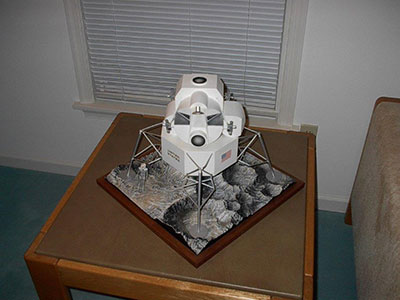 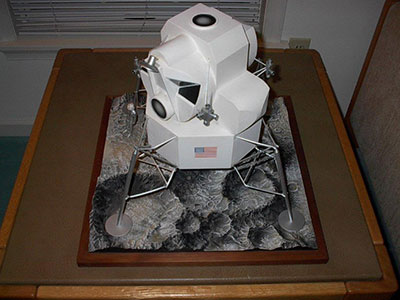
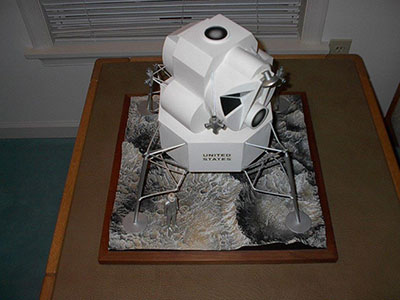
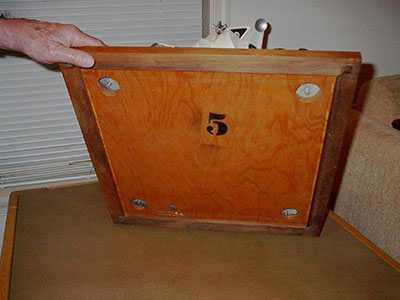
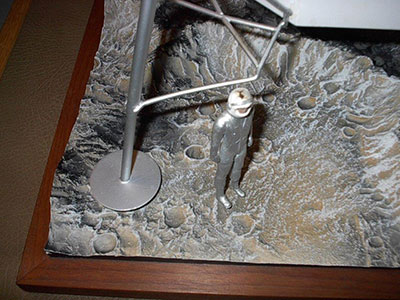
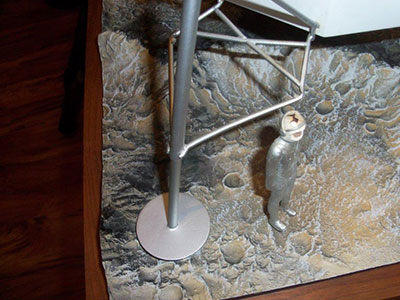
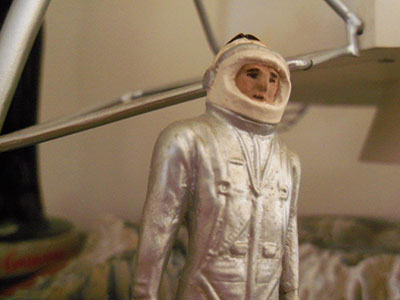
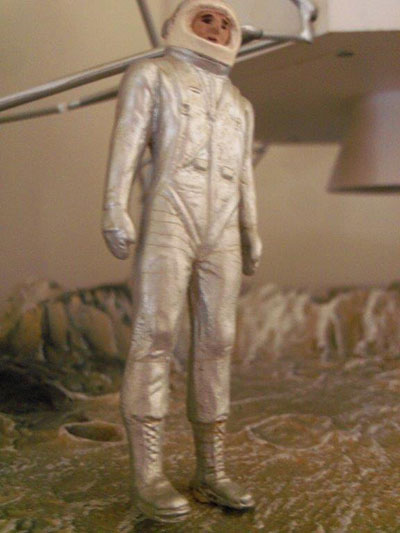
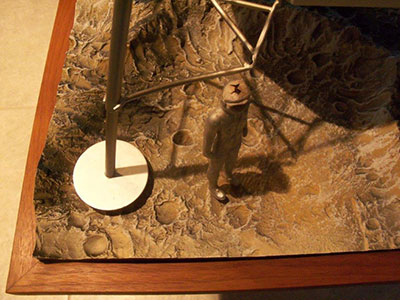

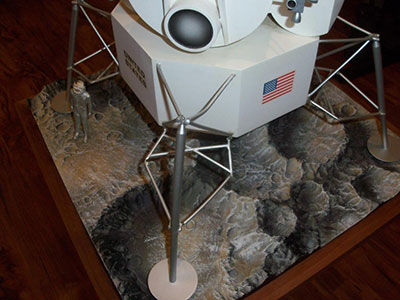
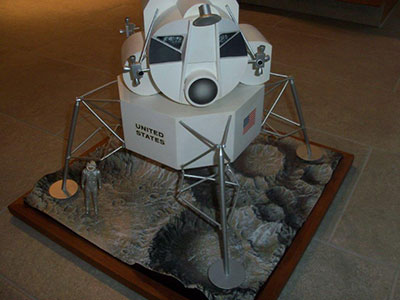
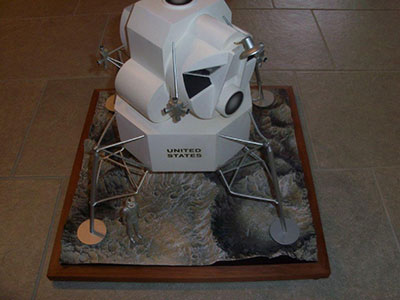
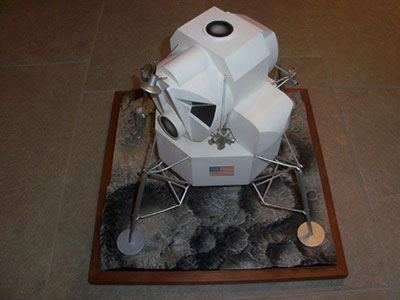
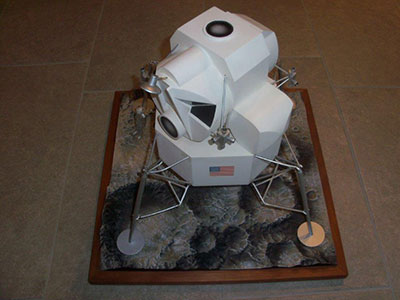
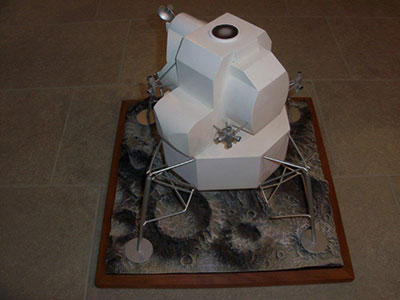
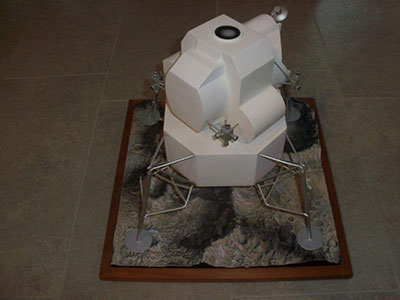
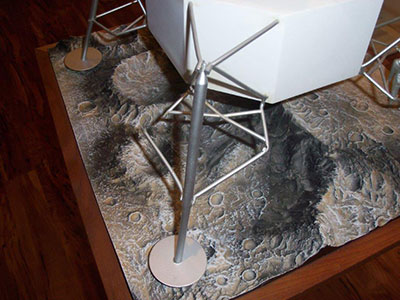
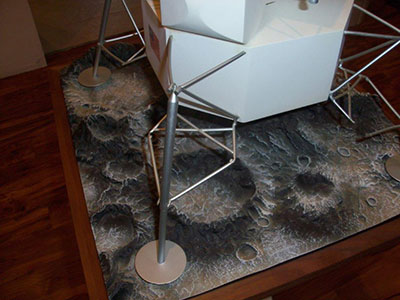
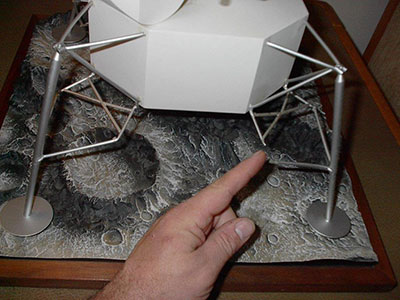
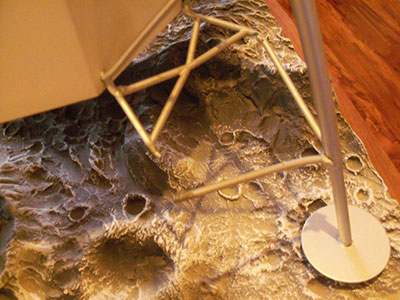

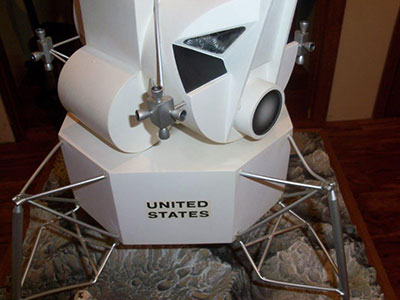
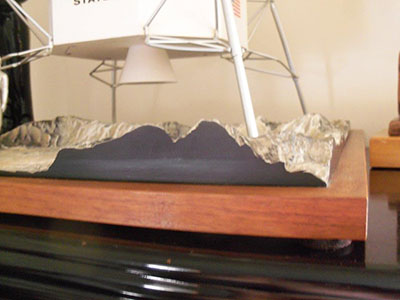
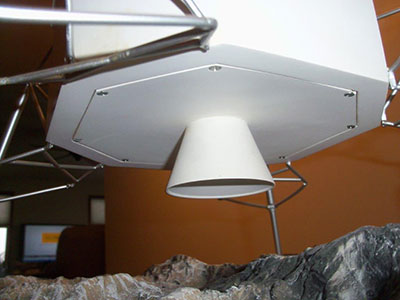
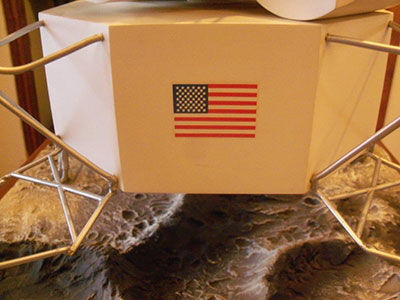
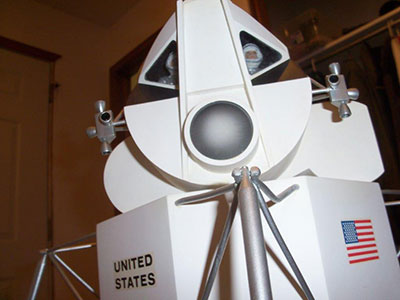
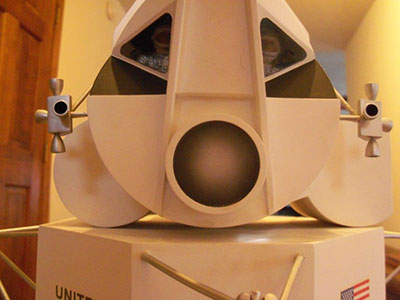
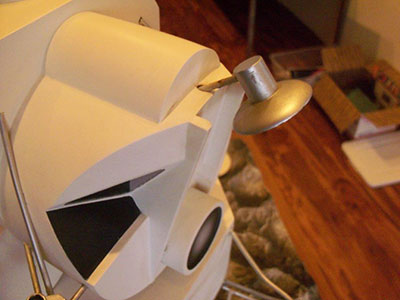
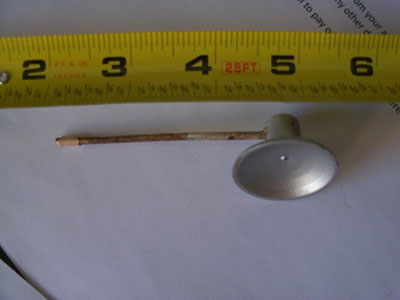
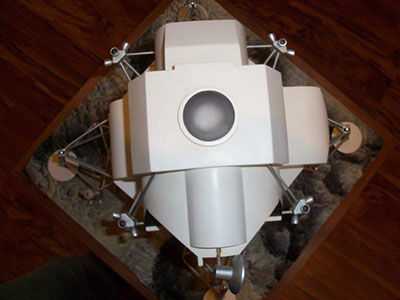

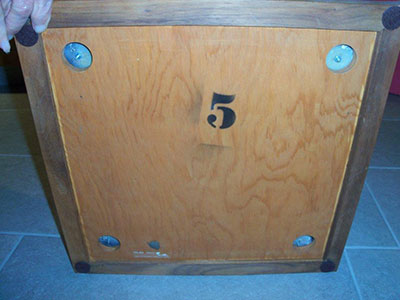
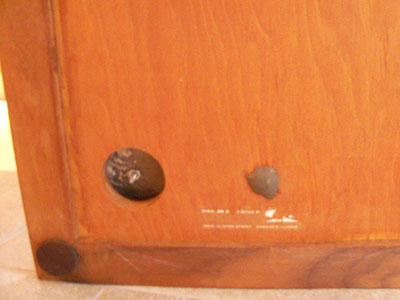
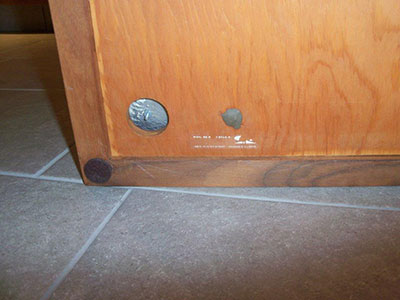
|















































